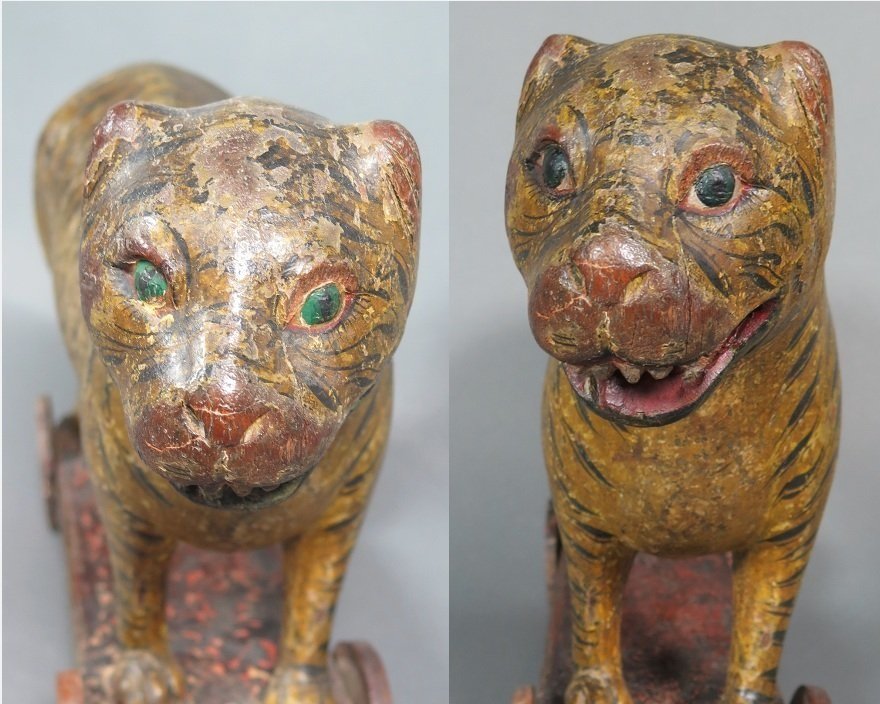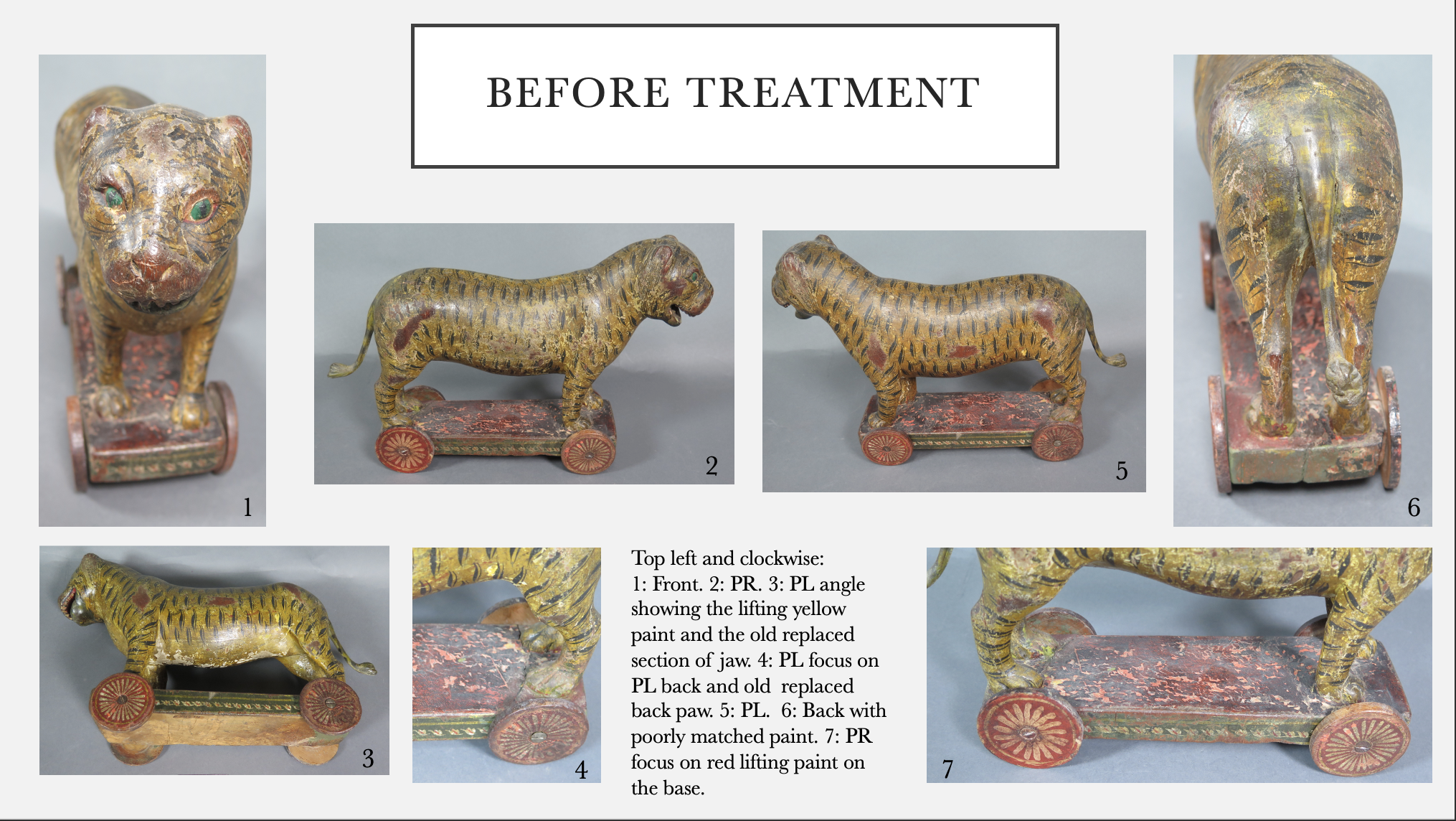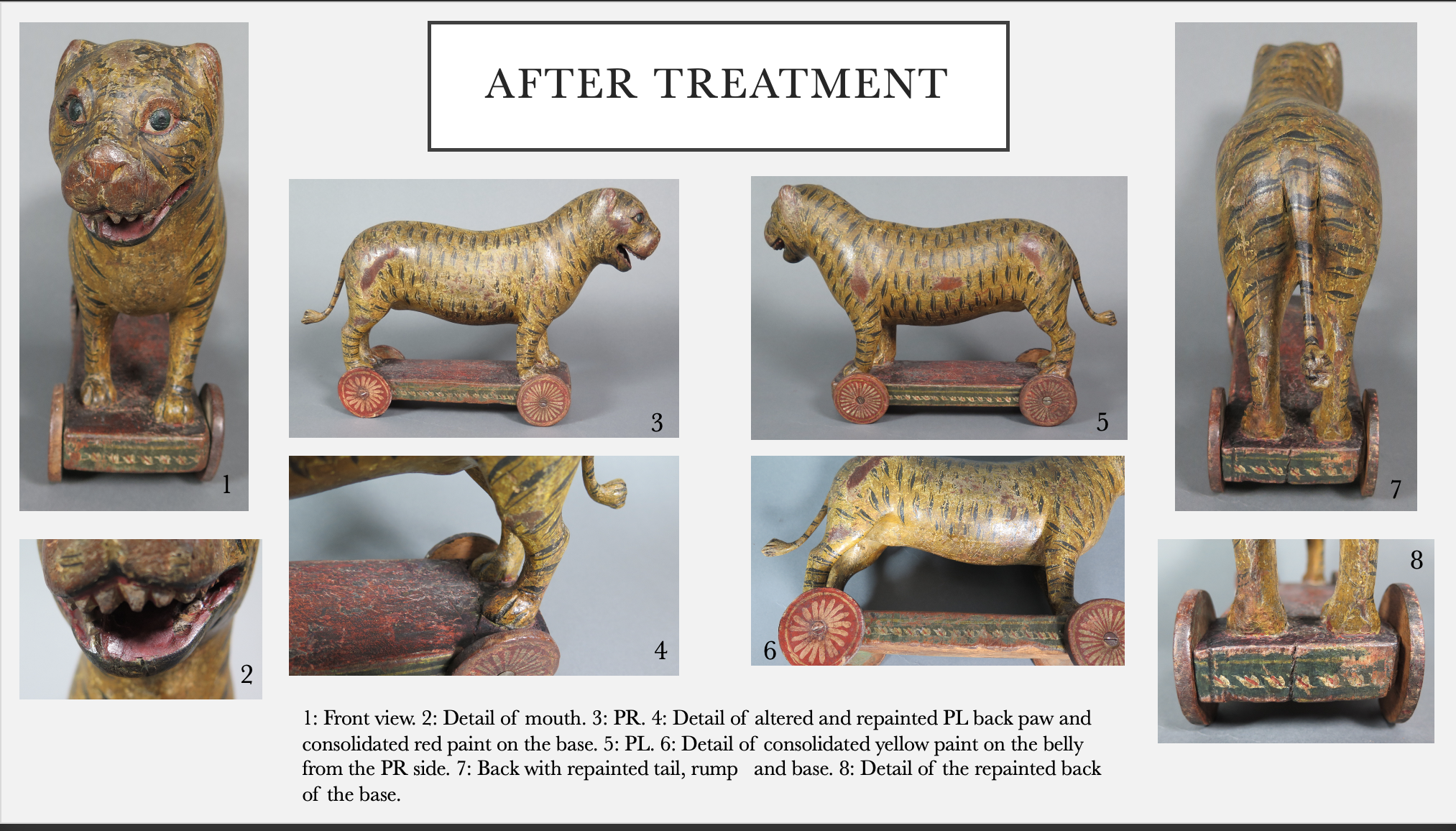
Toy Tiger
A 19th century wooden toy tiger from India. While unconfirmed by the museum database or by the curator it is possible this toy was made in Rajasthan, a region in India with a large wooden-toy making industry as it bears a striking resemblance to other examples of toys from that region. The well-loved yellow tiger stands on a red base with four wheels.


Condition
•Surface is dusty and is covered in use wear marks and grime.
•Several areas had been previously broken and subsequently repaired with wood or other material. Part of the jaw was missing and was replaced and overpainted, both ears are missing small areas but were not replaced and the top portion of the PL eye lid was broken and repainted.
•The back PL paw and PL back corner of the based was broken off and repaired sometime in the past.
•Both back legs were cracked and the tail had been broken off and replaced. While the back PL wheel is original the back PR wheel is a replacement. It is likely that originally the back PL wheel is the one missing given the extent of loss on that side and area.
•The entire toy is painted save the underside of the base, proud areas have lost most if not all paint and the wood underneath has been worn to a shine.
•Much of the original paint is chipping or lifting, most notably the chipping of the yellow paint on the belly and the lifting red paint of the base. The repaired overpainted portions are notably the wrong colour but are very stable. There are areas on the back PL corner which are painted but do not match the pattern nor the colour of the surrounding area.
Treatment
•The toy was cleaned with saliva and cotton swabs to remove surface grime, then in areas where there were old repairs the mismatched paint was removed slightly with acetone and cotton swabs.
•Lifting paint was consolidated using 0.5% methyl cellulose in 1:1 deionized water and Ethanol, then in-painted in areas of great loss on the belly and on the base.
•The cracks on the back of the legs were filled with Paraloid B72 20% in acetone and microballoons and then in-painted using acrylic paint.
• The back PL paw’s shape was altered slightly with methylcellulose and Japanese paper, then in-panted to match.
•Missing tongue section was replaced with a coloured paper fill attached using 0.5% methyl cellulose in 1:1 deionized water and ethanol, then it and the surrounding replaced jaw were in-painted to better match the original design.
•Other areas of old repair and poorly matched colour and design were repainted to better match the object.